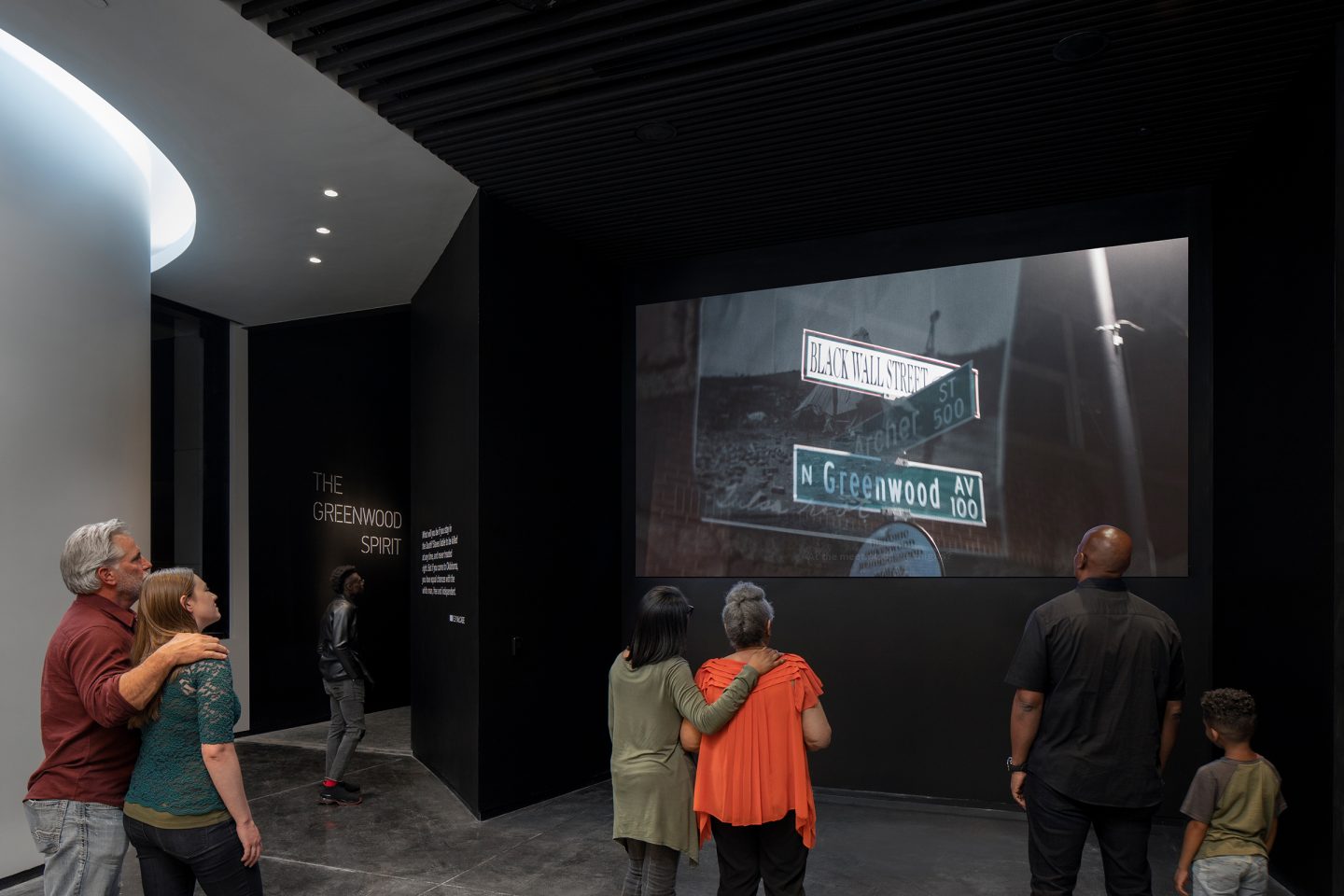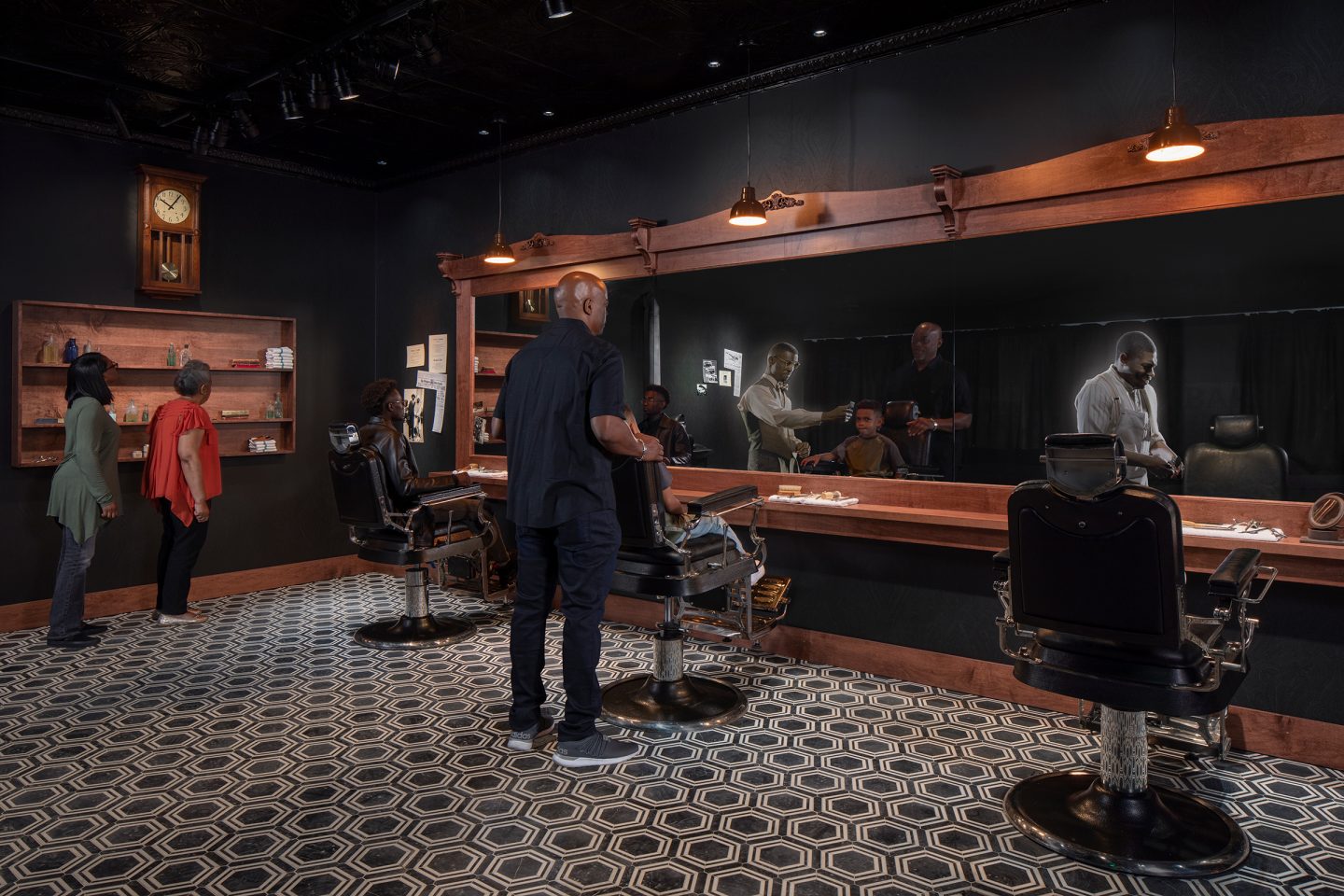Greenwood Rising: Black Wall Street History Center
Restoring the voice of a community silenced for a century.
Overview
For decades, the 1921 Tulsa Race Massacre was systematically erased from history books. Greenwood Rising was built to end that silence. But telling this story required a delicate balance: we had to unflinchingly depict the horror of the attack without defining the community solely by its victimization. We designed the center not as a memorial to death, but as a celebration of the "Greenwood Spirit"–taking visitors on an emotional journey that moves from the entrepreneurial heights of Black Wall Street, through the disaster of 1921, and into a future focused on reconciliation.
Partners
Selser Schaefer Architects, Goldmill Productions, Loyal Kaspar, 1220 Fabrication
Services
Exhibit Design, Media Design
Museums are valuable to the extent they link the past to the present and illuminate, and appraise, both. In Greenwood Rising the links are made overt and we’re urged to ponder them, to recognize that the white-on-Black violence of 1921 is still with us, and that Black disenfranchisement, like racism, remains entrenched.
The Details
We recognized that facing such heavy history requires care, so we designed the experience to prioritize the emotional safety of the visitor. In the galleries depicting the violence, we built an "Emotional Exit"—a bypass that allows guests to step away from the most graphic content if they need a moment of respite. But the museum focuses just as much on joy. In a recreated 1920s barbershop, holographic projections allow visitors to eavesdrop on the banter of the era, bringing the vibrant, living community of Greenwood back to life. Finally, the experience pivots back to the future: in the Commitment Space, visitors end their journey by adding specific actions to advance racial reconciliation in their own lives.
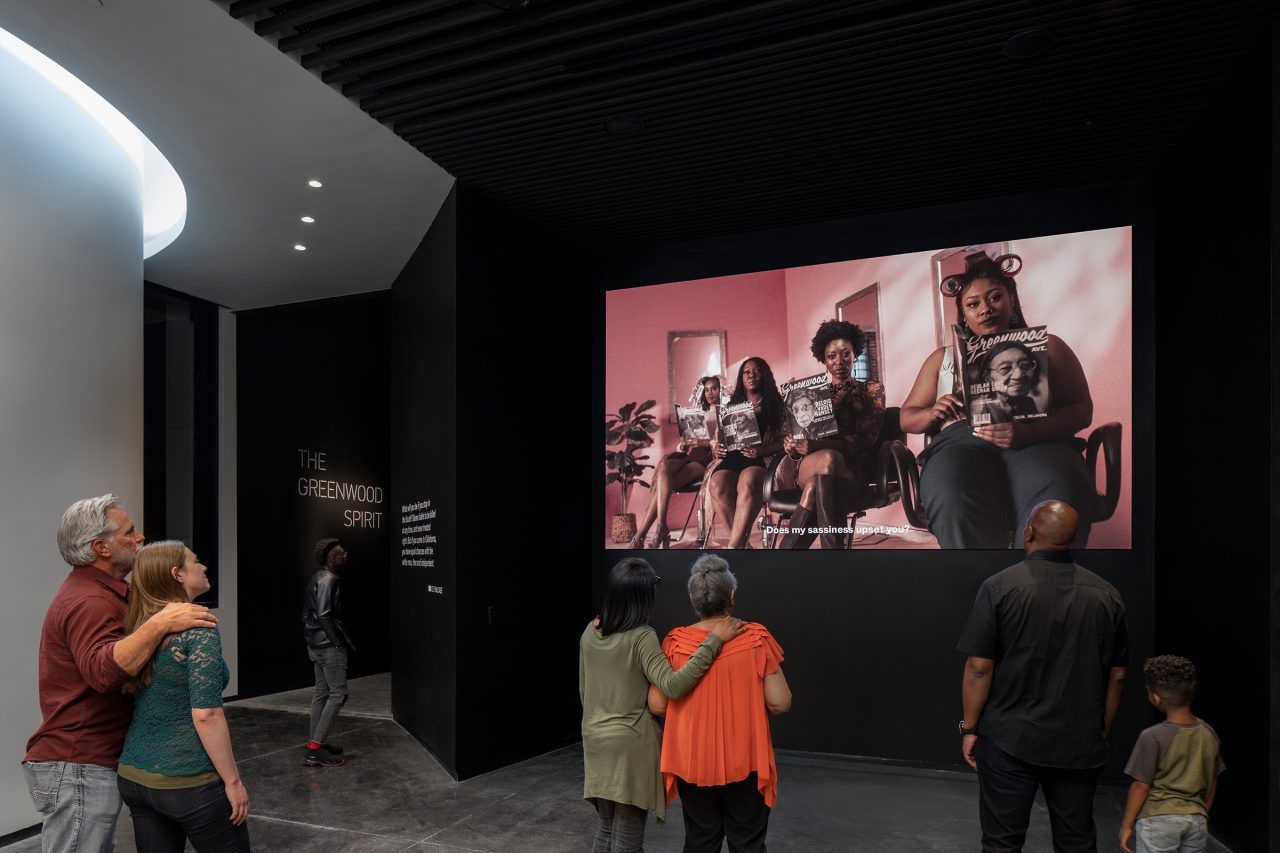

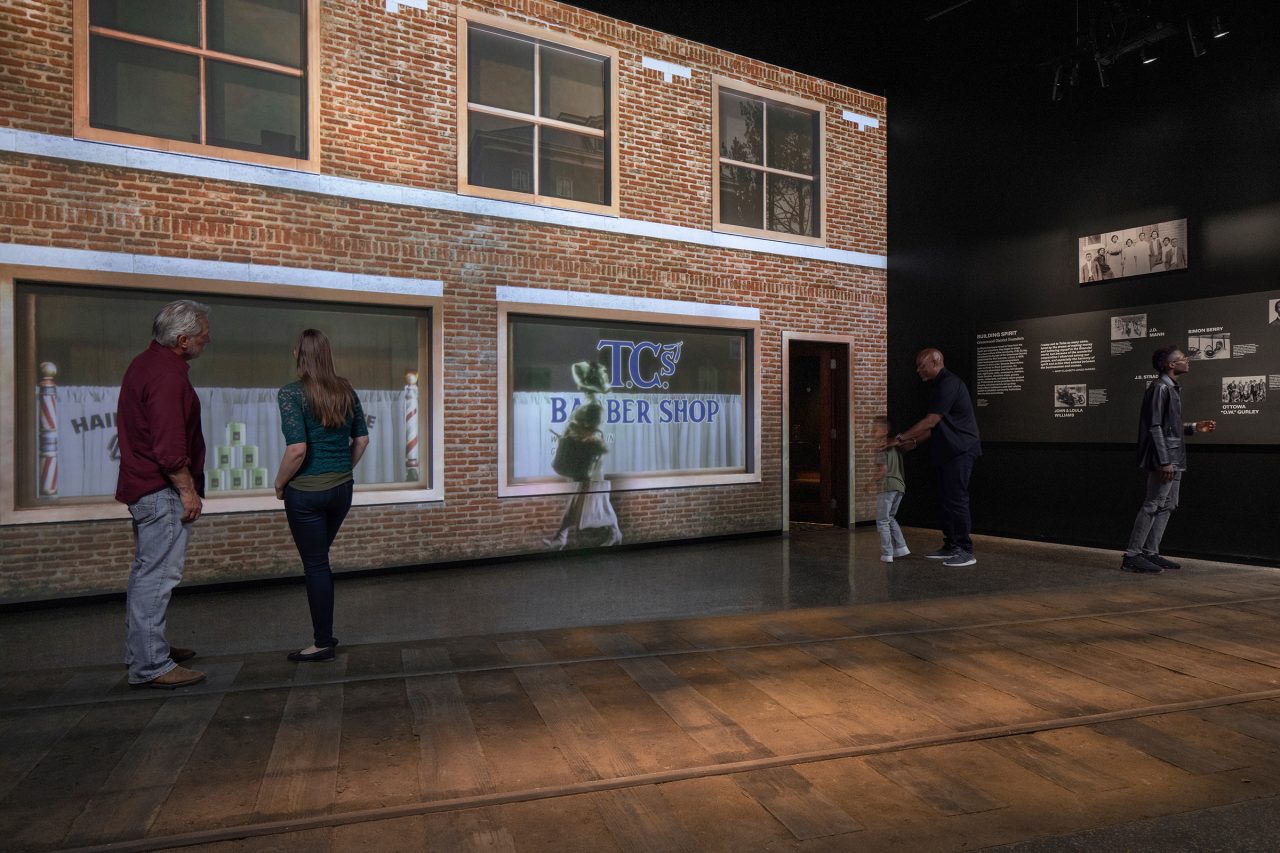
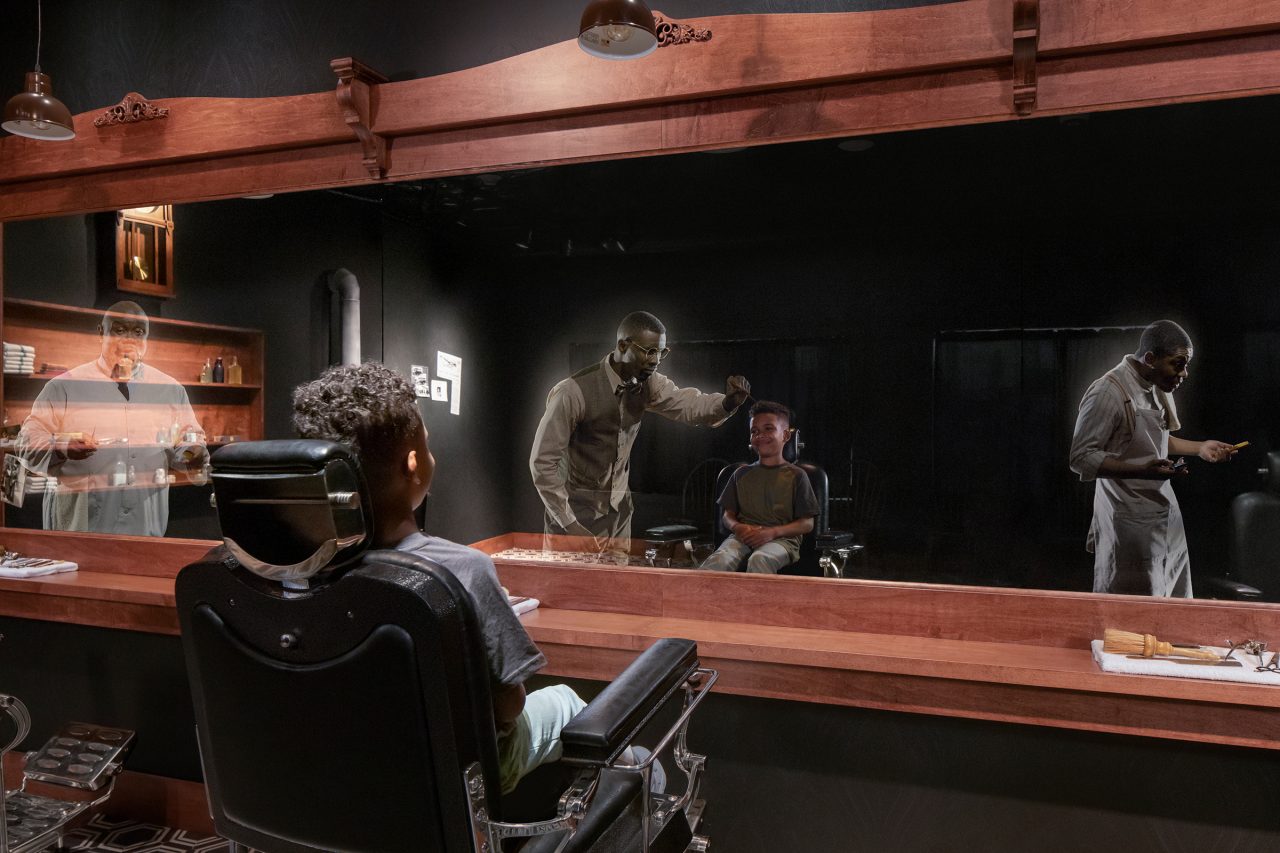
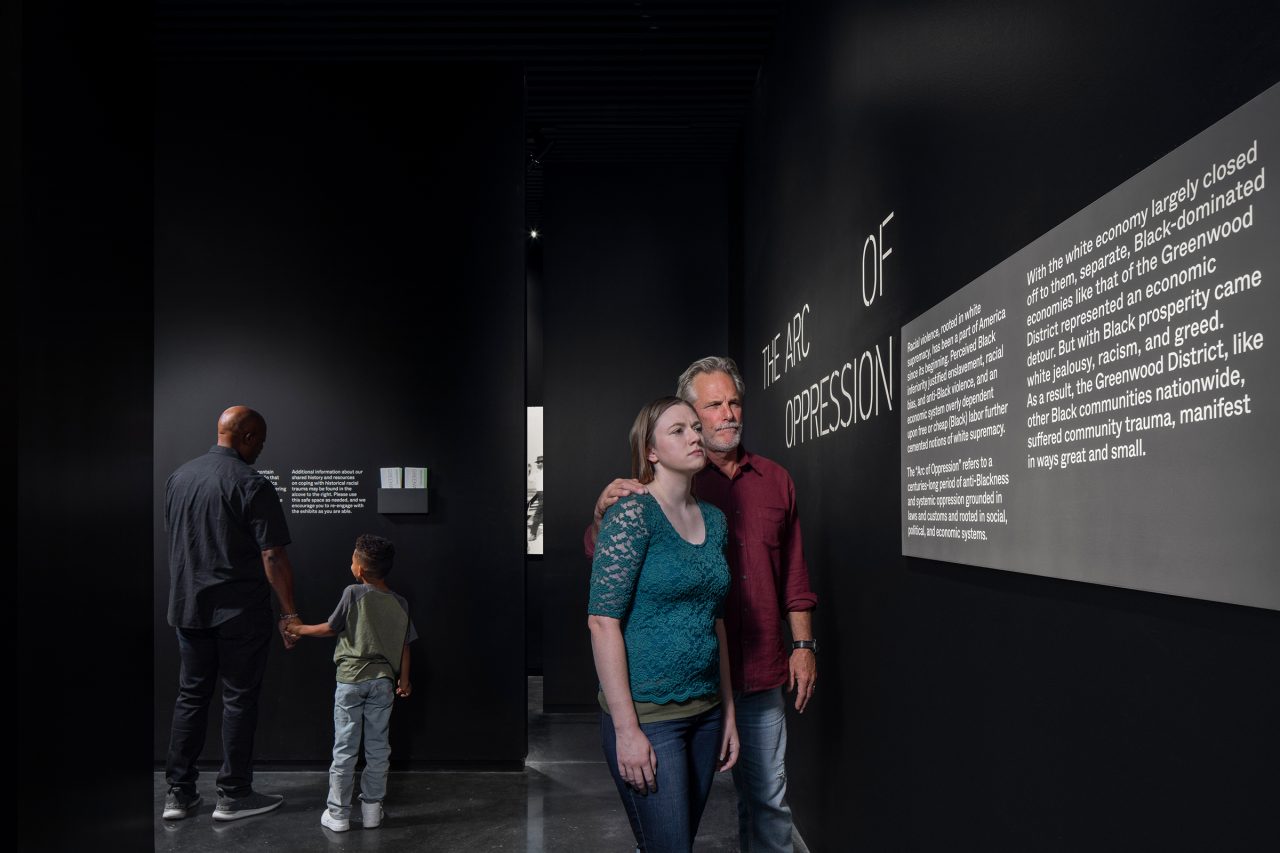
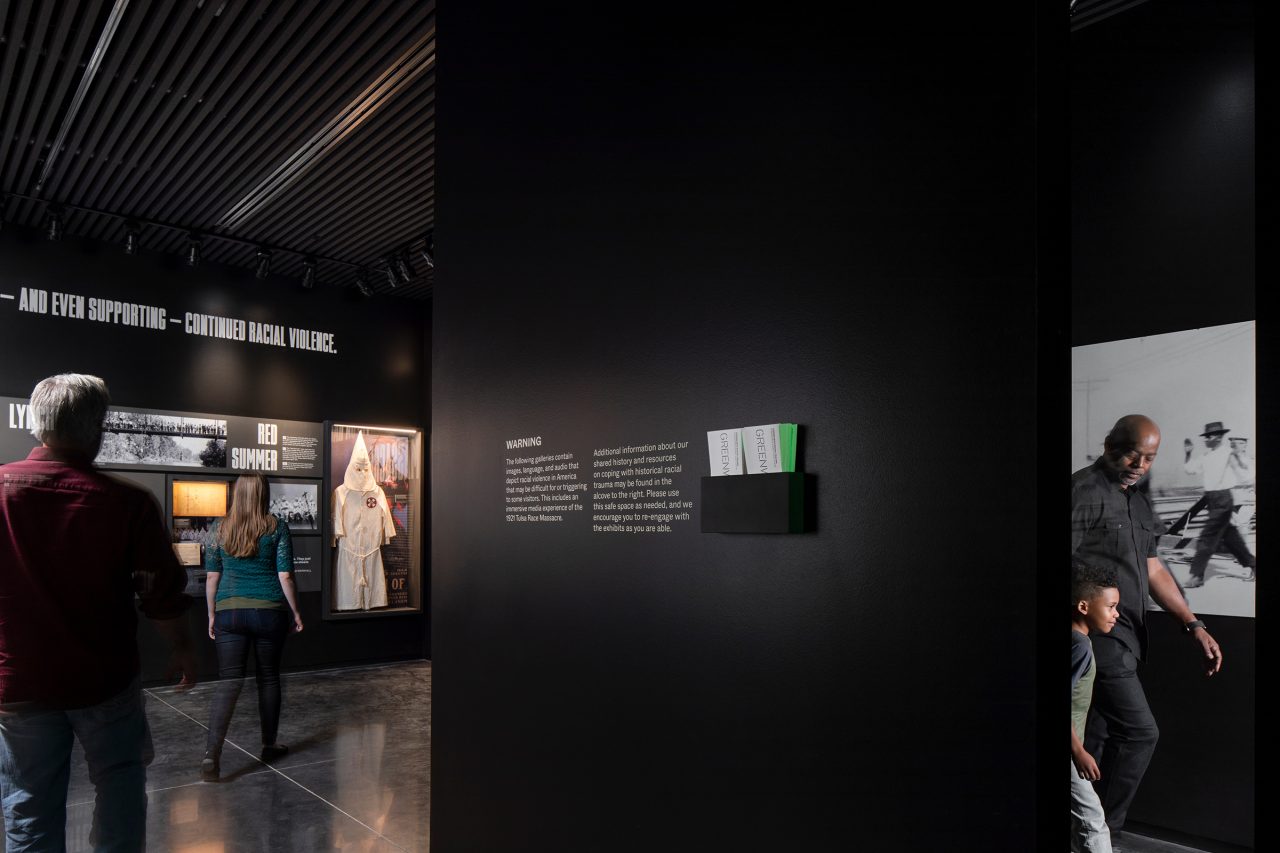
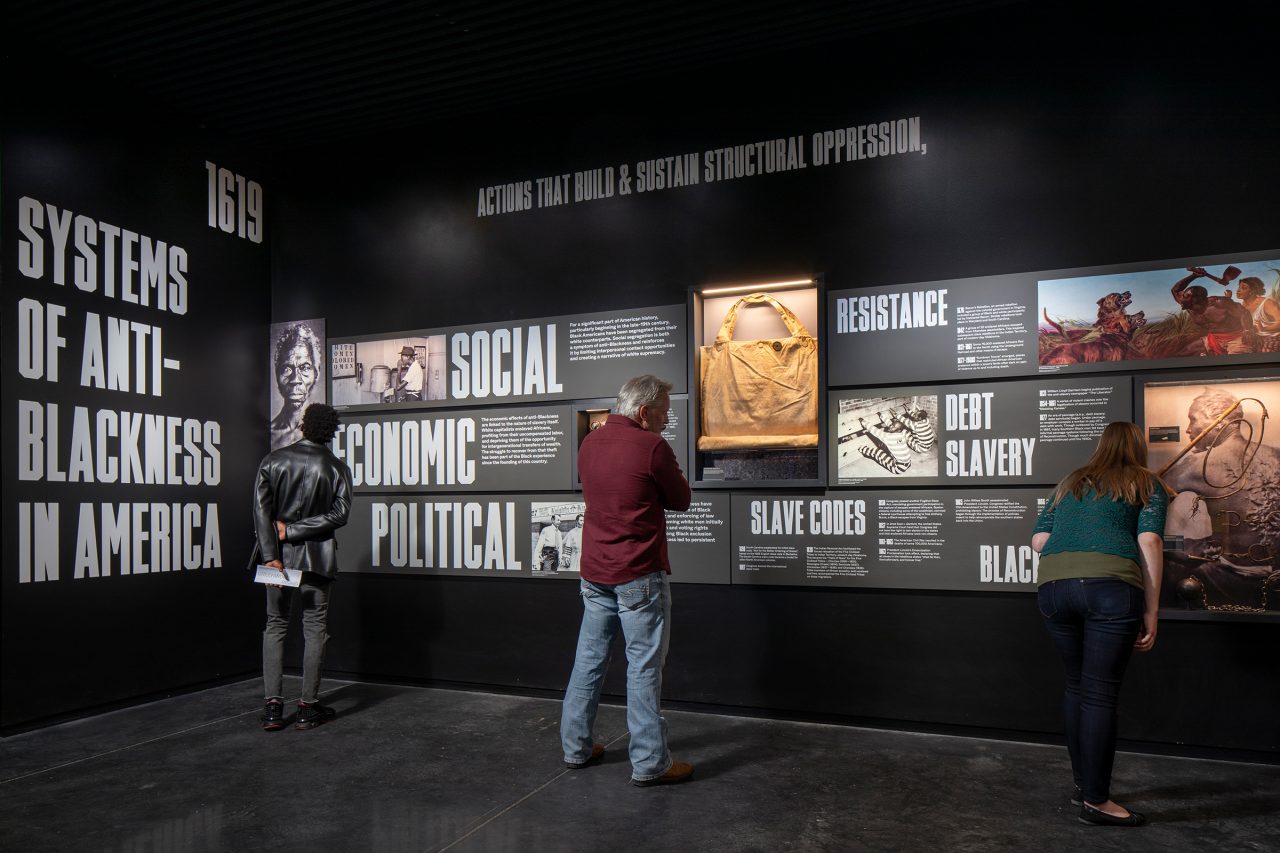
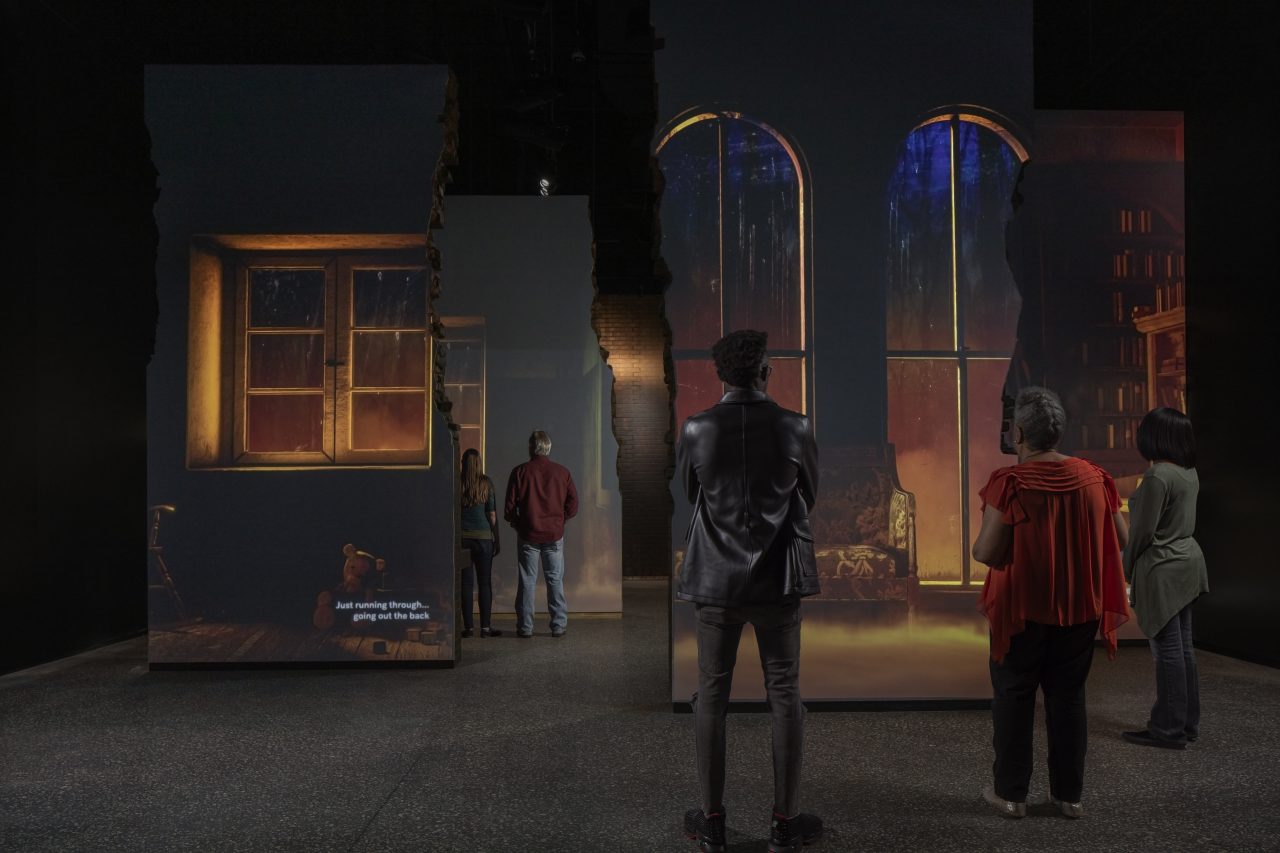

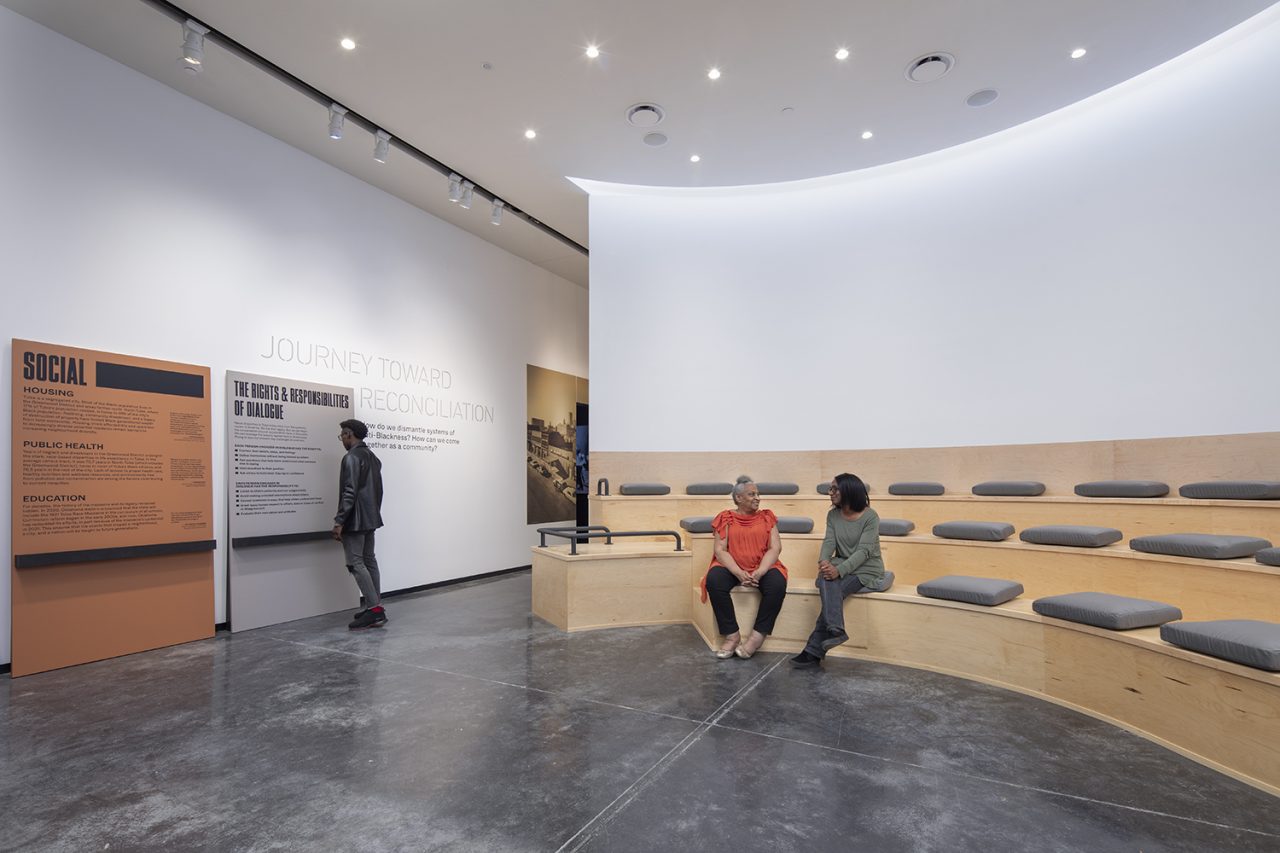
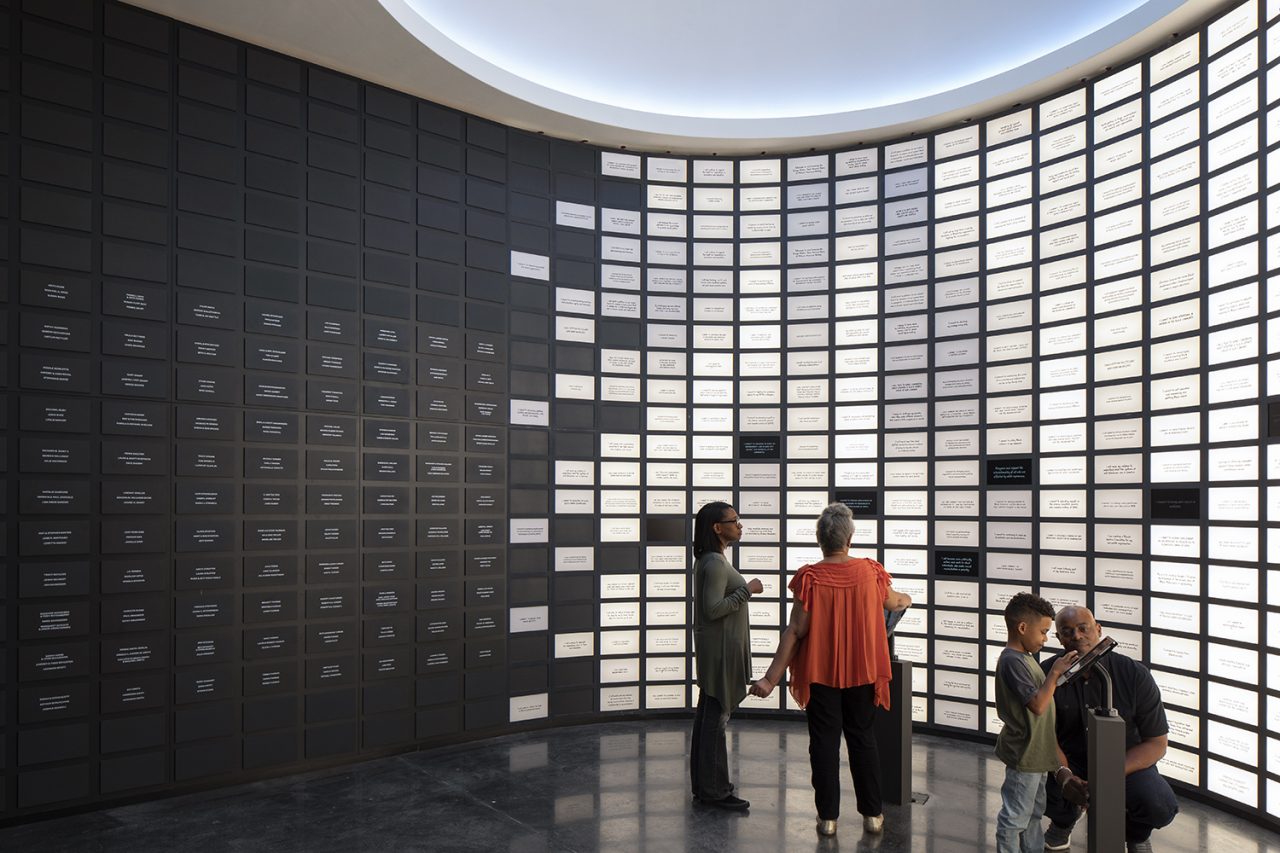
Inside Greenwood Rising, blunt, non-academic storytelling relies on first-hand accounts. Visitors move swiftly through the multi-media presentation which regularly challenges guests with frank presentations of America’s, Oklahoma’s and Tulsa’s racial hatred and violence without ever crossing into unnecessary shock effect. Details... are provided to show receipts of racism, but the experience never bogs down in an attempt to be comprehensive.
